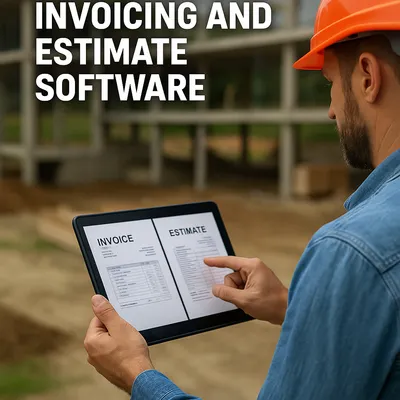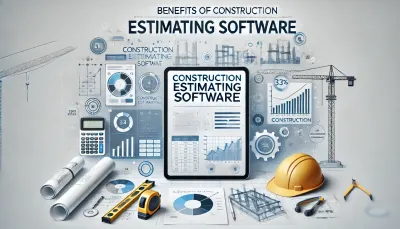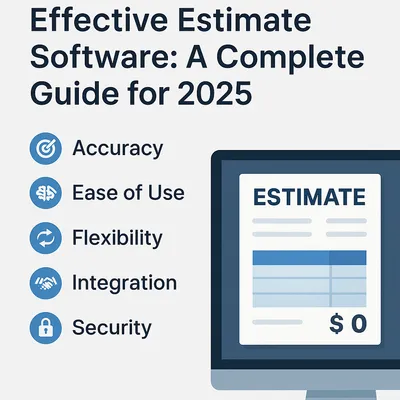Top 5 mistakes to avoid when creating estimates for clients
Avoid these mistakes to improve your services, streamline workflows, and build stronger client relationships. Discover tips to enhance estimating!
by
Quickadmin • 12/15/2024
Shortcut to success: • Looking for a flexible template? → Customize your estimating software in minutes • Want to get paid faster? → Cloud-based invoicing: boost cash flow and accuracy
Top 5 mistakes to avoid when creating estimates for clients
Just as you can customize your estimating software to meet different market needs and significantly improve your services, you can also take steps to avoid some of the most common mistakes you can make when creating estimates for clients.
Often, these mistakes stem not from a lack of skill but from limited experience, inadequate preparation and even poor communication. Fortunately, by proactively avoiding these challenges and addressing them when necessary, you can elevate your service from average to outstanding, ensuring client satisfaction and long-term success.
So keep reading and discover the top 5 most common estimating mistakes and how to avoid them.
1.- Set unrealistic expectations
We understand the appeal of claiming that your services are the fastest, most accurate and cheapest than the competition to attract more clients. However, this kind of strategy can be a double-edged sword.
On one hand, you could have a long line of clients, but on the other, you will have to face the fact that in order to provide a quality service, it is impossible to do it with such high expectations in terms of speed, accuracy and cost.
When you promise too much, you risk overcommitting and underdelivering, which can harm your reputation and lead to dissatisfied clients. The reality is that quality often requires time and resources to achieve, and that is not a negative factor.
Instead, consider highlighting the true value of your services, whether it’s your expertise, personalized approach, or commitment to deliver the best results within realistic timeframes and budgets.
2.- Inadequate takeoffs
In addition to losing the trust of your clients, setting high expectations can put the entire project at risk, as trying to deliver in a fraction of the time may lead to overlooking crucial details and starting with an inaccurate takeoff.
For example, shortcuts can be used, such as relying on outdated data or skipping essential steps in the planning process. These shortcuts might seem like a way to save time or reduce costs, but they often lead to errors that could have been easily avoided with more careful attention to detail.
Now let’s say that you do everything right, you establish a reasonable amount of time and communicate your limits with your clients, but you still decide to use outdated practices like manually entering data instead of seeking the advantages of an estimate software that can prevent any chances of human error that can slow down the project.
Recognizing the need for improvement in technology and tools can make a significant difference in the efficiency and accuracy of your estimating process. So, we encourage you to explore modern estimating software that can streamline your workflow and minimize errors.
3.- Lack of risk assessments
No client wants to hear about the potential risks and costs associated with their project -especially when the percentage is low- so it’s essential as an estimator not to overlook this aspect in the estimate and to reassure the client about the importance of this stage.
It’s a possibility that clients may initially resist hearing about risk assessments, but it is crucial to frame these discussions in a way that highlights their relevance to the project’s overall success. We talk about identifying potential challenges upfront, planning for contingencies, secure necessary resources, and mitigate disruptions to protect both the project and the team involved.
4.- Miscommunication
Every project, regardless of its size or nature, involves a significant number of people whose roles must be considered when creating an estimate for your client, given that each individual brings unique information essential to the estimate software.
We can agree that communication between the estimator and every member is key to success. Now, failing to prioritize communication can lead to misunderstandings, miscalculations, and overlooked details, ultimately resulting in delays, increased costs, and potential quality issues.
As the estimator, you must ensure an effective communication network is in place for data collection. This ensures that everyone -contractors, suppliers, and project managers- is aligned and that all necessary information is gathered accurately and on time.
5.- Underestimating labor and indirect costs
Fluctuations in labor cost can challenge the estimator as labor rates vary based on market conditions, skill levels, project location, and union agreements. This variability can lead to errors, as providing accurate and consistent estimates can be difficult.
To mitigate this challenge, estimators must stay updated on local labor market trends, including changes in wage rates and the availability of skilled workers. So they can anticipate fluctuations and plan accordingly.
The same goes for indirect costs. It is important not to overlook or underestimate the relevance of this factor. These costs administrated expenses, equipment rental, utilities, site management, supplies, etc. though not directly tied to the labor or materials required for the project, can accumulate quickly and affect profitability if not properly accounted for.
An estimator comprehends all potential indirect costs that may arise throughout the projects and incorporates those costs into the estimate software early on, reducing the likelihood of underestimating the total project cost.
The best tools for a successful estimate project, besides the use of estimate software, are attention to detail, good boundaries, communication, and thorough preparation. These elements work together to create a solid foundation for accurate and reliable services.
Avoid these mistakes and watch how your performance improves while earning client trust. For more ways to boost your estimate process, look at our blog and explore practicable advice design to help you deliver exceptional results on every project.
FAQs — Estimating for Freelancers & Small Teams
How often should I update my labor rates?
At least quarterly, or immediately after a new union agreement or government bulletin is released.
What contingency percentage is safest?
5–10 % for low-risk scopes and 10–20 % for complex builds, justified by historical data and current market volatility.
Does estimating software really reduce errors?
Yes. Digital takeoffs cut manual entry, auto-apply cost codes and flag missing line items. Explore more benefits in our post on software customization.
How do I explain a price increase to the client?
Share a clear cost breakdown, highlight market-driven changes (fuel, wages) and propose value-engineering options to keep the project on budget.
Is a “no-surprises” clause worth adding?
Absolutely. Defining how scope changes will be priced prevents disputes and protects both parties.



























